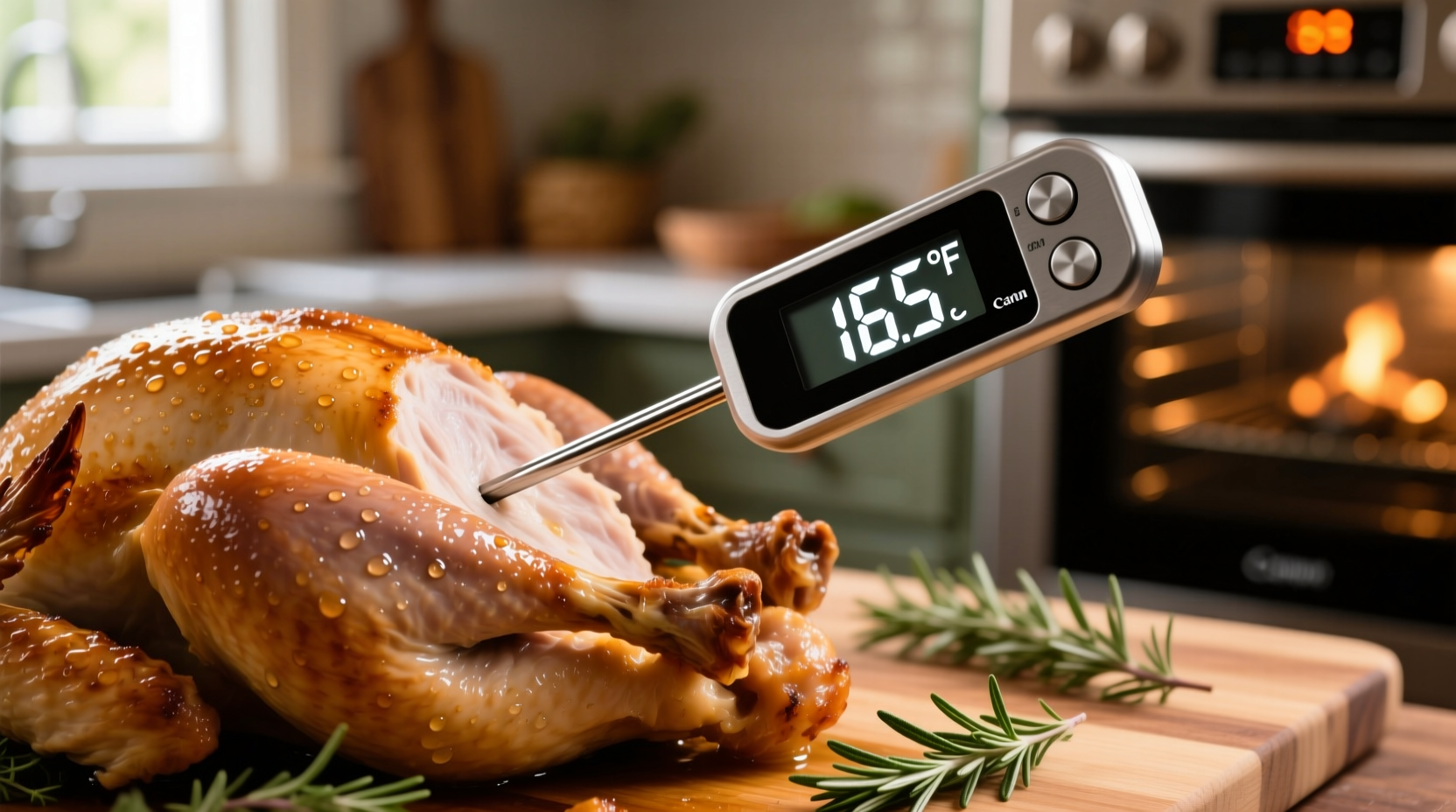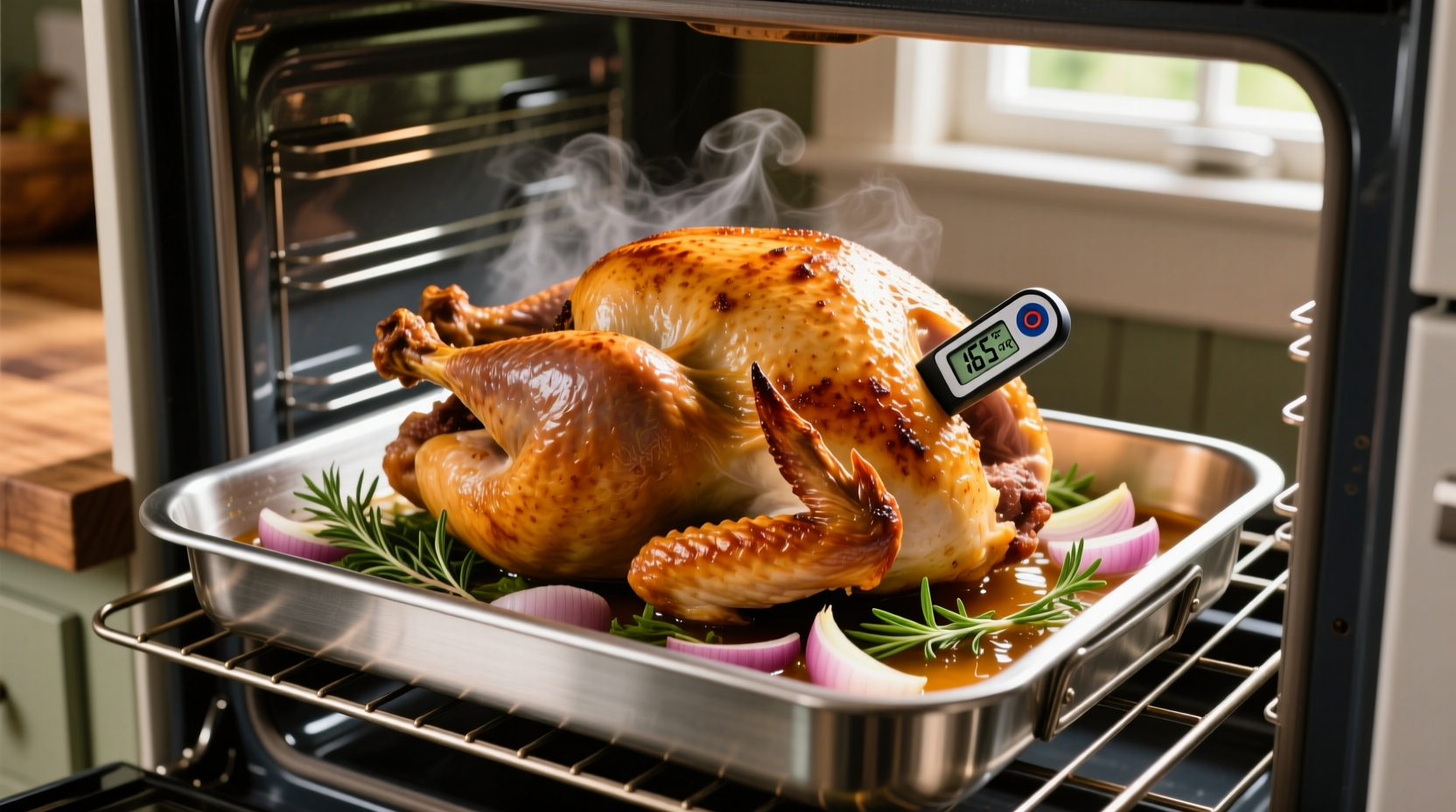The safe internal cooking temperature for turkey is 165°F (73.9°C) as measured with a food thermometer in the thickest part of the breast, thigh, and wing. This temperature destroys harmful bacteria like Salmonella and Campylobacter while maintaining optimal moisture and texture.
Every year, millions of home cooks face the same Thanksgiving dilemma: what temperature should turkey be cooked to for perfect results? Getting this critical detail wrong can lead to dry, overcooked meat or worse—foodborne illness. As someone who's cooked hundreds of turkeys across professional kitchens and home settings, I've seen how precise temperature control transforms holiday meals from stressful to spectacular.
Why Temperature Matters More Than Time for Perfect Turkey
Timing alone fails because turkey size, oven accuracy, and starting temperature create significant variables. The USDA Food Safety and Inspection Service emphasizes that internal temperature is the only reliable indicator of doneness. Relying on pop-up thermometers often results in overcooked breast meat since they trigger at 165°F but don't account for uneven cooking.
| Part of Turkey | Safe Minimum Internal Temperature | Optimal Texture Temperature |
|---|---|---|
| Breast | 165°F (73.9°C) | 150-155°F (65.5-68.3°C) before resting |
| Thigh | 165°F (73.9°C) | 160-165°F (71.1-73.9°C) before resting |
| Wing | 165°F (73.9°C) | 160°F (71.1°C) before resting |
| Stuffing | 165°F (73.9°C) | N/A |
How to Measure Turkey Temperature Correctly
Proper thermometer placement makes all the difference. Insert your instant-read thermometer into the thickest part of each section, avoiding bone and fat pockets:
- Breast: Center of the meat, parallel to the breastbone
- Thigh: Between drumstick and body, near the joint
- Wing: Center of the meatiest section
For best results, use a leave-in probe thermometer with multiple sensors. The USDA recommends checking temperature in three separate locations since heat distribution varies significantly across the bird.

Temperature Evolution: How Cooking Guidelines Have Changed
Food safety standards for poultry have evolved significantly. In the 1970s, recommendations suggested cooking turkey to 180°F (82.2°C), resulting in notoriously dry meat. Modern understanding of bacterial kill rates revealed that 165°F maintained for 15 seconds achieves the same safety with better texture.
According to the FDA Food Code (2022), this temperature threshold represents the point where pathogens are eliminated almost instantly. The shift reflects improved scientific understanding of thermal death time for bacteria—a critical advancement documented by the USDA's Food Safety Research Information Office.
Context Boundaries: When Standard Temperature Guidelines Don't Apply
While 165°F remains the universal safety standard, certain cooking methods require temperature adjustments:
- Sous vide cooking: Can safely cook at 145°F (62.8°C) for 4+ hours due to precise temperature control
- Smoked turkey: Requires maintaining smoker temperature between 225-250°F (107-121°C) while monitoring internal temperature
- Deep-fried turkey: Oil should be 350°F (177°C) but internal temperature still needs to reach 165°F
Never use color as an indicator—turkey can appear done at 150°F but still harbor dangerous bacteria. The USDA's Meat and Poultry Hotline confirms that pink color near bones is normal in younger birds and doesn't indicate undercooking when the proper temperature is reached.
Resting Time: The Critical Final Step
After reaching 165°F, remove turkey from heat and let it rest for 20-40 minutes (depending on size). During this time:
- Temperature continues rising 5-10°F (carryover cooking)
- Juices redistribute throughout the meat
- Proteins relax, improving texture
Cover loosely with foil to retain heat without trapping steam that would soften the skin. This resting period is when your turkey transitions from merely safe to truly exceptional.
Troubleshooting Common Temperature Problems
Dry breast but undercooked thighs? Try spatchcocking (butterflying) your turkey for more even cooking. Or use a two-temperature method: start at 425°F (218°C) for 30 minutes, then reduce to 325°F (163°C).
Thermometer giving inconsistent readings? Calibrate it by testing in ice water (should read 32°F/0°C) or boiling water (212°F/100°C at sea level).
Stuffing not reaching 165°F? Cook stuffing separately for food safety. The USDA reports that stuffed turkeys take 25-30% longer to cook, increasing the risk of undercooked stuffing.
Essential Tools for Temperature-Perfect Turkey
Invest in these temperature-focused tools:
- Digital instant-read thermometer (like ThermoPro or Thermapen)
- Leave-in probe thermometer with multiple sensors
- Oven thermometer to verify your oven's actual temperature
- Insulated resting pan to maintain heat during carryover cooking
Remember that cooking turkey to the proper temperature isn't just about safety—it's the foundation for moist, flavorful meat that becomes the centerpiece of your celebration. By focusing on precise temperature control rather than arbitrary cooking times, you'll consistently achieve restaurant-quality results at home.











 浙公网安备
33010002000092号
浙公网安备
33010002000092号 浙B2-20120091-4
浙B2-20120091-4